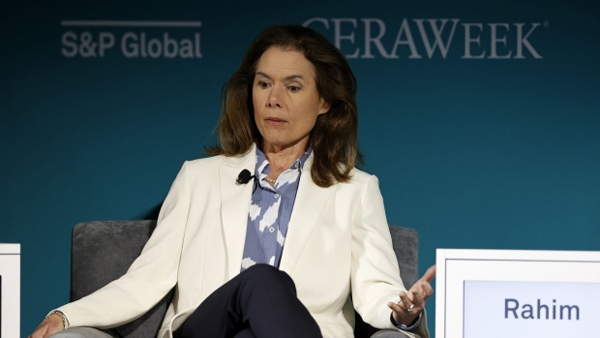
Watch video: Carlyle’s Pooja Goyal on the Next Phase of the Energy Transition
Devika Krishna Kumar and Mitchell Ferman, Bloomberg News
HOUSTON
EnergiesNet.com 03 08 2023
The specter of peak oil that haunted global energy markets during the first decade of the 21st century is once again rearing its head.
Major US oil producers are warning that production from one of the fastest growing sources of supply appears likely to top out by the end of the decade. ConocoPhillips and Pioneer Natural Resources Co. are among those saying the American shale-oil juggernaut soon will be a spent force as the best drilling targets are exhausted and financing new wells gets more difficult.
“You see the plateau on the horizon,” ConocoPhillips Chief Executive Officer Ryan Lance said during a panel discussion at the CERAWeek by S&P Global conference in Houston on Tuesday. Once US crude production peaks around 2030, it’ll plateau for a time before commencing a decline, he added.
Government and private-sector researchers have been cutting forecasts for 2023 US oil-supply growth in the face of surging cost inflation, labor shortages and investor demands that more cash be diverted from drilling to dividends and buybacks. Although output in the world’s biggest economy is set to continue rising for a least a few more years, the zenith is fast approaching, executives and analysts said.
“I wish we could get world leaders to realize that we need hydrocarbons for another 50 years,” said Pioneer CEO Scott Sheffield, who expects US production to peak in five or six years.
Before the dawn of the shale-oil revolution, theorists like the late investment banker Matthew Simmons were issuing dire warnings that the Middle Eastern oil bonanza that fed more than half a century of unprecedented economic expansion across the Western world was unsustainable.
But those fears were swept aside as fracking and horizontal drilling innovations perfected in US natural gas fields were adopted by oil drillers, who unleashed billions of barrels of crude that had been locked in heretofore impenetrable shale.
Shale-oil production began to surge early in the last decade, pushing overall US output to roughly 13 millions barrels a day in late 2019. But publicly traded oil companies have come under immense pressure to prioritize investor returns over production growth and it is in part why output is expected to peak, said Helen Currie, chief economist at ConocoPhillips.
Rising costs that squeeze profits also are discouraging management teams from pursuing some drilling projects. Commodity-trading house Gunvor Group Ltd. estimates that inflation in US oilfields will reach about 25% this year and 15% to 20% in 2024.
“It’s not about any downgrade to the resource or any negativity but it’s really about the pace of development of these resources,” Currie said.
bloomberg.com 03 07 2023












